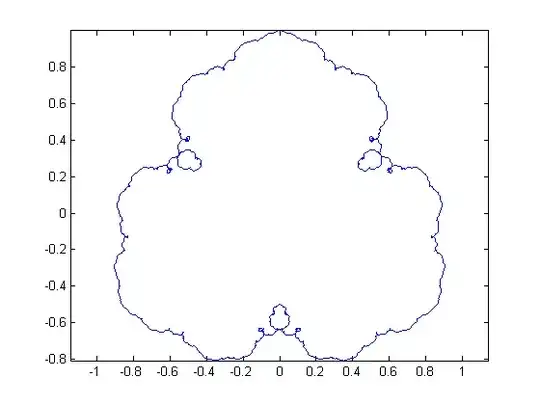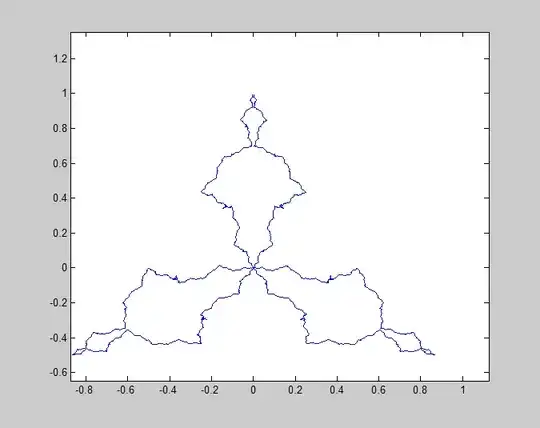I was trying different algorithms out, and after a while, I found this fractal:
The generation has similarities to Koch's curve, but instead of putting triangles on triangles, I put circles on top of circles.
The algorithm is the following:
I go trough the angles between 0 and 360 degrees, and for each angle, I calculate the x and y positions of the next point on the curve with
$P_{x}=\sum_{i=1}^{n} \cos (a \cdot4^{i})\cdot r / 4^{i}$
$P_{y}=\sum_{i=1}^{n} \sin (a \cdot4^{i})\cdot r / 4^{i}$
where a is the current angle, r is the radius if the original circle, n is the level of the fractal and P is the position of the next point.
I looked for hours on the internet, but I couldn't find a similar fractal to this. Does this have a name or is it documented?



